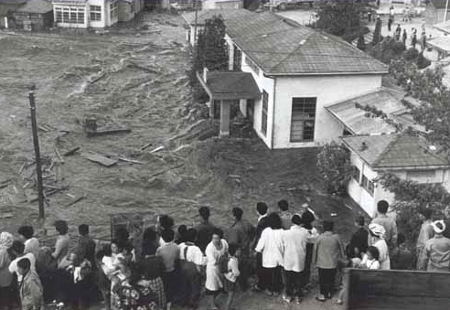Feature: Engineered for Earthquakes

Japanese residents watch a 1960 tsunami flood their village.
How does engineering, including extra steel bracing and embedded hydraulic shock absorbers, help make modern Japanese buildings among the sturdiest in the world? Will lining the coast with tsunami warning signs, towering seawalls , and well-marked escape routes allow Japan to avert devastation?
A March 11 feature in the New York Times offers some insights on safety systems and building design — including a nifty graphic on constructing a flexible tower. The paper carried another articel on March 13 that discusses construction of the seawalls that cover 40 percent of the coastline and are as much a part of the scenery as docks or boat.
Such precautions, along with earthquake and tsunami drills that are routine for every Japanese resident, make Japan arguably the best-prepared country in the world for the twin disasters of earthquake and tsunami — practices that undoubtedly saved lives, though the final death toll is unknown.
Filed under: Class Activities, Grades 6-8, Grades 9-12, Lesson Plans, Special Features
Tags: Curriculum, Environmental Engineering, Japan, Lesson Plan, Physics








